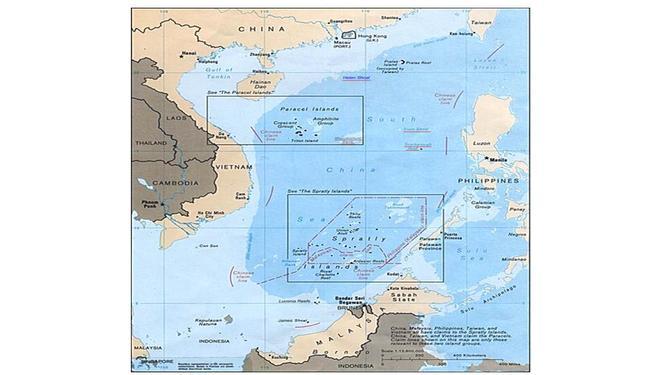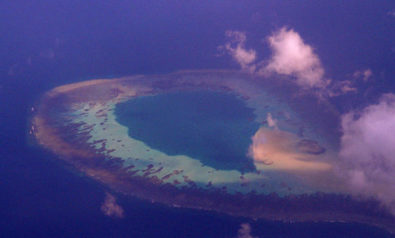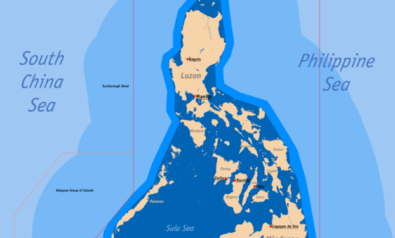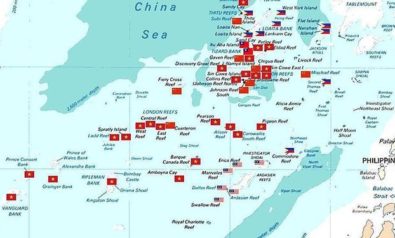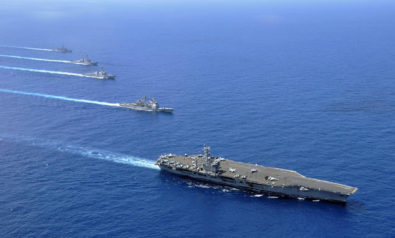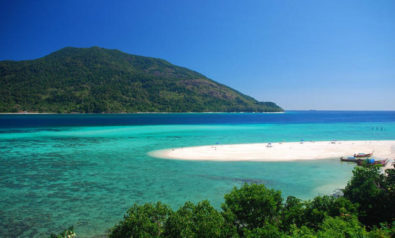An analysis of the territorial disputes in the South China Sea between Vietnam, China and the Philippines.
Background
The Spratly and the Paracel Islands in the South China Sea total less than thirteen km² in actual land. However, their strategic locations along the world’s most heavily trafficked shipping lanes, as well as the precious oil and gas deposits beneath, have made them the subject of fierce territorial disputes between a number of East and Southeast Asian nations. China, Taiwan, the Philippines, Malaysia, Brunei, and Vietnam have all laid claim to some or all of the islands, forcing numerous diplomatic stand-offs and, occasionally, naval showdowns.
The exact territorial claims in question are complex, with each country reaching further into the past to provide historical evidence for its sovereignty in the South China Sea. China’s somewhat ambiguous “nine-dotted line” policy includes the majority of the South China Sea, and both the Paracels and the Spratlys. This policy follows maps drawn as early as 1914, endorsed by the Kuomintang in 1947 and later by the Communist government. China has backed up its claims with effective control of the Paracel Islands, having forced out the South Vietnamese military in 1974 and significant control of the Spratlys after the 1988 naval skirmish with a unified Vietnam.
Vietnam, however, continues to assert its claims of sovereignty and in 2009, submitted to the UN an official expansion of its continental shelf far beyond the 200 nautical miles allotted. Vietnam does not even refer to the “South China Sea” and instead calls it the “East Sea”. In 2005, China fired upon Vietnamese fishing boats and in 2011, Vietnam claimed that Chinese vessels had cut the cables of a Vietnamese oil and gas survey ship; these incidents have stirred up new anti-Chinese sentiment in Vietnam.
The Philippines, who along with Vietnam and China have most forcefully asserted their territorial claims with naval and diplomatic backing, also claim some of the reefs and gas fields within the Spratlys as well as the Scarborough Shoal. From April to May 2012, a Philippines warship was in a standoff with Chinese surveillance boats after trying to arrest Chinese fishermen. During this time, it also engaged in previously scheduled military exercises with the United States, leading China to publically reiterate its right to defend its maritime borders with military force.
The United States encourages East and Southeast Asian nations to settle territorial disputes through international frameworks such as the Association for Southeast Asian Nations (ASEAN). This, in addition to the US Navy’s regular patrols of the South China Sea, has ever since caused great tension with China.
Why is the South China Sea relevant?
Over half the world’s shipping passes through the area, a figure expected to rise as Chinese oil consumption grows. Military installations on the Spratlys and the Paracels would potentially allow a nation to monitor and control this valuable merchant traffic. In addition, the Chinese government has estimated that the South China Sea contains 17.7bn tons of crude oil deposits, second only to Saudi Arabia. While other estimates have placed the potential deposits lower, this declaration drove a flurry of interest in the region. Valuable fishing in the region has also come into play as the South China Sea produces approximately 10% of the annual global fisheries catch.
The atmosphere in the region is tense as territorial disputes about the ownership of islands and the whole sea are on the verge of an escalation. Not only would such an escalation have fatal consequences for the regional order, but it will affect the global community as a whole.
As the South China Sea contains important strategic and economic hotspots connecting some of Asia's most essential economies and constituting the main maritime trade channel, peace and stability is needed to ensure the maritime security in the region.
For more than 10 years, Fair Observer has been free, fair and independent. No billionaire owns us, no advertisers control us. We are a reader-supported nonprofit. Unlike many other publications, we keep our content free for readers regardless of where they live or whether they can afford to pay. We have no paywalls and no ads.
In the post-truth era of fake news, echo chambers and filter bubbles, we publish a plurality of perspectives from around the world. Anyone can publish with us, but everyone goes through a rigorous editorial process. So, you get fact-checked, well-reasoned content instead of noise.
We publish 2,500+ voices from 90+ countries. We also conduct education and training programs on subjects ranging from digital media and journalism to writing and critical thinking. This doesn’t come cheap. Servers, editors, trainers and web developers cost money.
Please consider supporting us on a regular basis as a recurring donor or a sustaining member.
Support Fair Observer
We rely on your support for our independence, diversity and quality.
Will you support FO’s journalism?
We rely on your support for our independence, diversity and quality.

